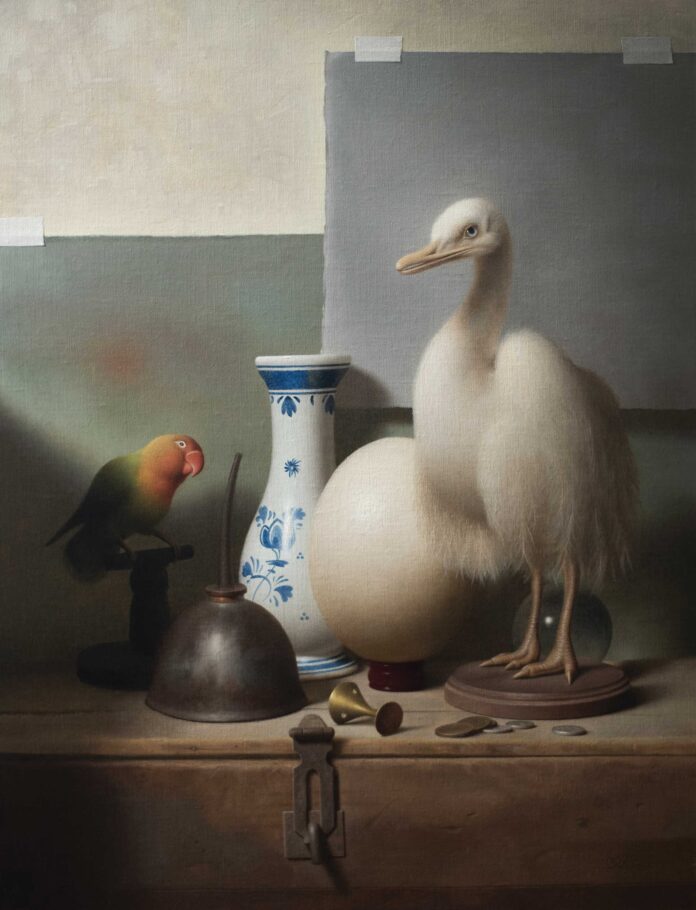There is a lot of superb contemporary realism being made these days; this article by Allison Malafronte shines light on a gifted individual.
Devin Cecil-Wishing (b. 1981) is one of hundreds of millennial-aged artists who, despite living in a tech-centric, modern culture, found their way to a classical atelier that still teaches Old Master methods and materials. That school is the well-known Grand Central Atelier in New York City, but that was not Cecil-Wishing’s starting point for his art training and career.
That goes back more than a decade prior when, after discovering the work of underground cartoonist R. Crumb (b. 1943), he attended the San Francisco School of the Arts High School. Cecil-Wishing went on to study illustration at what is now called California College of the Arts, where he developed an interest in 1960s poster art, surrealism, and wildlife art. After graduation, a trip to the Netherlands brought Cecil-Wishing face-to-face with Rembrandt’s “The Anatomy Lesson of Dr. Nicolaes Tulp“ at the Mauritshuis, and he had an epiphany: he loved traditional painting. Returning to San Francisco, he studied at the Atelier School of Classical Realism in Oakland and then in 2009 made his way to Grand Central, where he currently teaches and paints.
Still one for curiosity-satisfying travel to fill his creative cup, Cecil-Wishing painted “Rhea” (illustrated above) after another museum-inspired aha moment. “The main inspiration for this piece was an experience I had this past summer while visiting the Kunsthistoriches Museum in Vienna,” the artist explains. “I found myself surrounded by Peter Paul Rubens and Frans Snyders paint-ings when I was suddenly struck by a realization that painting is an entire language, existing completely apart from the visual world in front of us. Just as the word ‘horse’ bears little resemblance to an actual horse, a painting of a horse needn’t necessarily be a recreation of the optical appearance of seeing a horse at all. Rather, it may just need to form the visual idea of a horse in a convincing enough way to make the viewer believe it is real.”
Cecil-Wishing continues, “It suddenly occurred to me that a depiction of an object could be absolutely, convincingly believable, while simultaneously bearing little to no resemblance at all to the optical experience of looking at the real thing. There was a language being spoken in the canvases in front of me — one which we can all somehow read, despite the fact that so few can actually speak it. Much of what inspires me to paint is the idea of learning to speak in the language of painting, as fluently and deeply as possible. ‘Rhea’ is an exercise in that realization.”
Connect with the artist at www.devincecil-wishing.com.
This article was originally published in Fine Art Connoisseur magazine (subscribe here).
- Become a Realism Today Ambassador for the chance to see your work featured in our newsletter, on our social media, and on this site for contemporary realism art.





